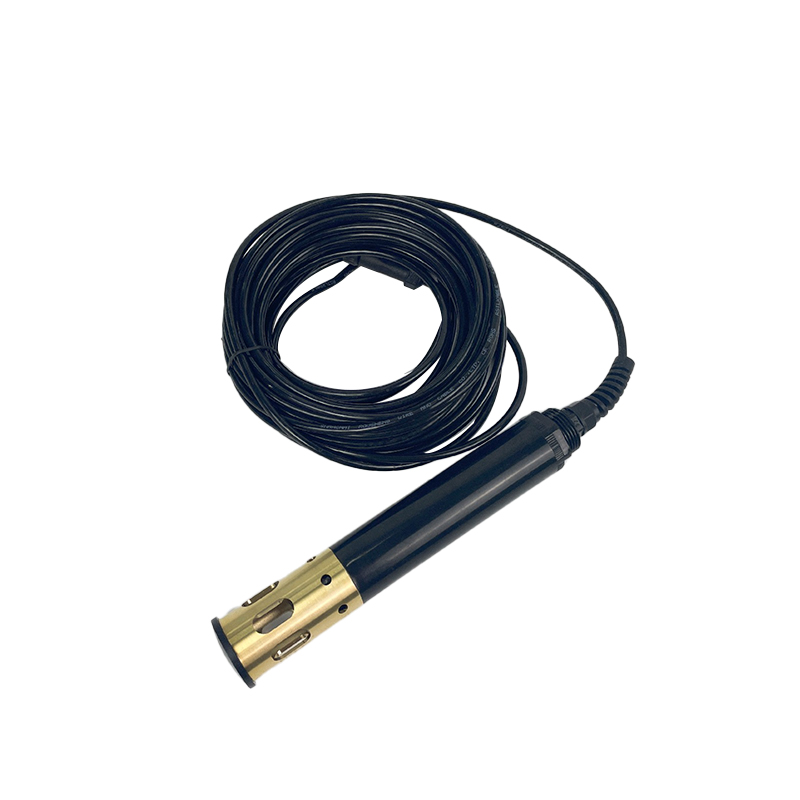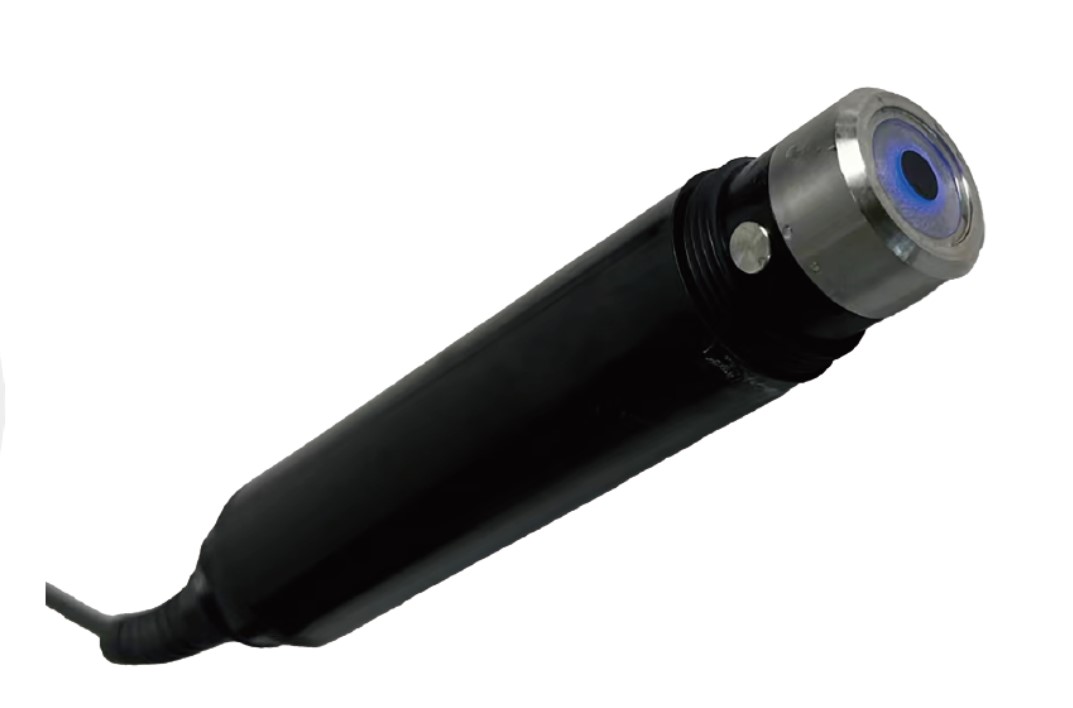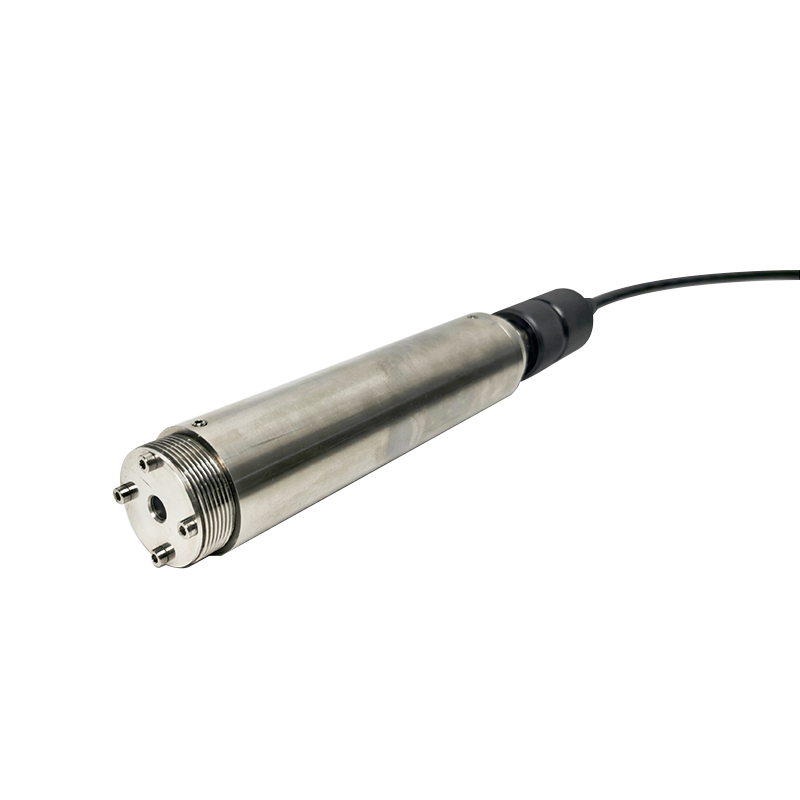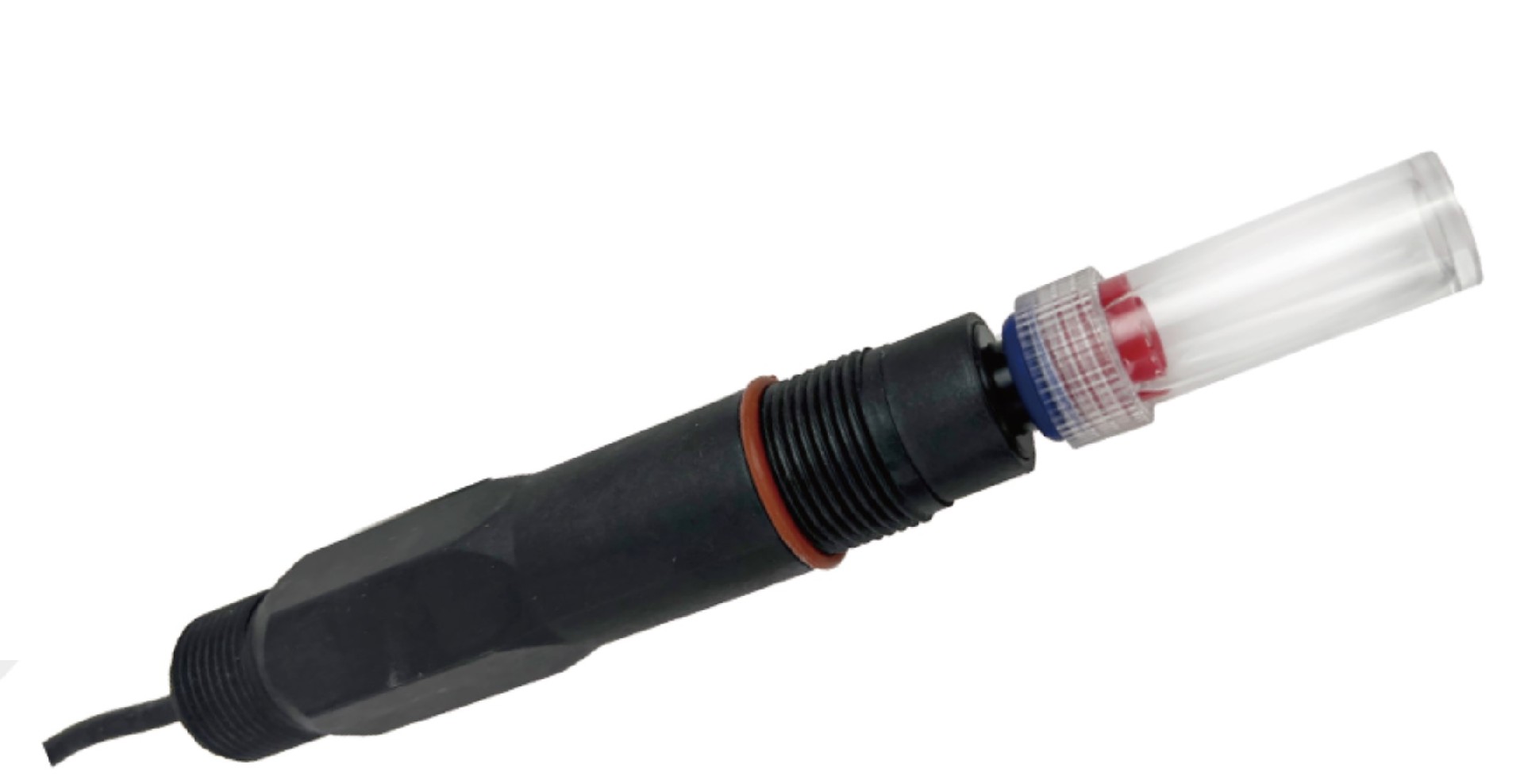Differences in measurement principles
The principle of polarographic dissolved oxygen measurement: The polarographic sensor consists of a silver anode and a gold cathode with a circular shape at the bottom, a thin semi permeable film that unfolds on the sensor, allowing gas to enter while isolating the electrode from the outside. During operation, the bottom of the sensor will be filled with electrolyte containing a small amount of surfactant to improve the wetting effect. When a polarization voltage is applied to the electrode of a polarographic sensor, oxygen will penetrate the membrane and react on the cathode, producing a current. The current flowing through the electrode is directly proportional to oxygen, and there is a linear relationship between the current and oxygen concentration at a constant temperature.
Principle of fluorescence dissolved oxygen analyzer: The fluorescence dissolved oxygen analyzer is based on the principle of fluorescence quenching. Blue light shining on fluorescent substances excites and emits red light. Due to the quenching effect of oxygen molecules, the time and intensity of excited red light are inversely proportional to the concentration of oxygen molecules. By measuring the phase difference between the excited red light and the reference light, and comparing it with the internal calibration value, the concentration of oxygen molecules can be calculated. Over linearization and temperature compensation, output the final value.
The advantages of fluorescence based dissolved oxygen meters over membrane based methods
The fluorescence method dissolved oxygen analyzer has more advantages. The membrane method is prone to being stuck by sludge, and sludge has little effect on fluorescence method DO measurement. The fluorescence method for measuring dissolved oxygen has advantages such as faster response and longer usage time compared to the polarographic method, but the fluorescence method for measuring dissolved oxygen is more expensive.
Traditional membrane dissolved oxygen meters require frequent replacement and cleaning of probes due to membrane and electrolyte issues, and data is prone to drift. Fluorescence based dissolved oxygen measurement does not require frequent cleaning of the probe, resulting in stable data and fast measurement response time. The effect is to save energy and ensure degradation efficiency. Overall, fluorescence based dissolved oxygen analysis has the following advantages.
No calibration required. Because it is designed using fluorescence method. So there is no need for calibration, which greatly reduces the maintenance workload during instrument use.
The measurement results are stable. The fluorescence method is used to measure dissolved oxygen because it does not consume any substances or dissolved oxygen in water during the measurement process, making the measurement results more stable.
Reduce cleaning frequency. The traditional membrane method requires frequent cleaning, otherwise it will seriously affect the transmission of oxygen, thereby affecting the measurement. Fluorescence method does not require high cleaning requirements for the probe, and regular wiping of the fluorescent cap is sufficient.
Low maintenance volume. Because fluorescence method does not require calibration, frequent calibration, membrane replacement (RO membrane), and frequent cleaning, its maintenance after installation and use is very minimal.
No interference. The changes in pH, chemical substances contained in wastewater, H2S, heavy metals, etc. will not interfere with the measurement. In addition, they themselves have oxidizing properties and may be used as oxygen by ordinary dissolved oxygen electrodes for measurement; The carbon dioxide in the electrolyte can have an impact on measurement, mainly by altering the conductivity of the electrolyte, while LDO does not have an electrolyte, so it is not affected by carbon dioxide.
Quick response time. Fluorescence method can respond to dissolved oxygen when in contact with water, and its time is very short.
No polarization time is required. Because no electrodes are used, there is no polarization issue.










